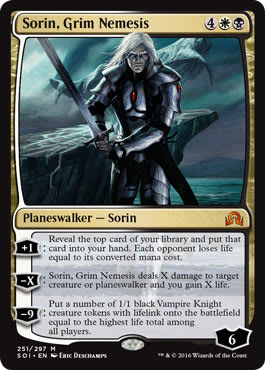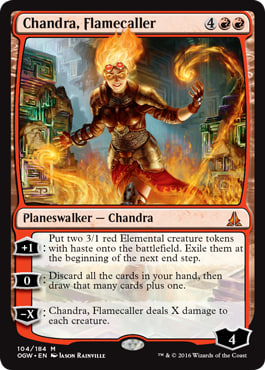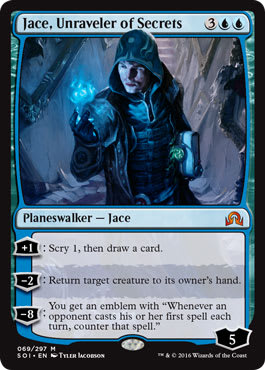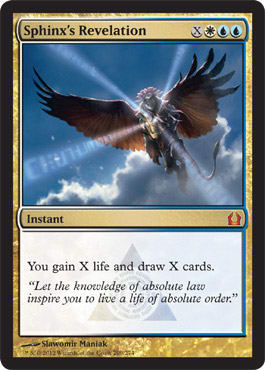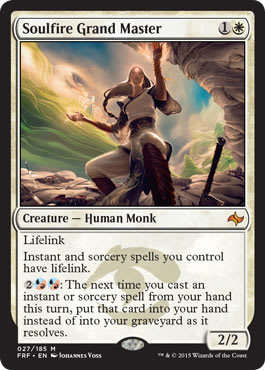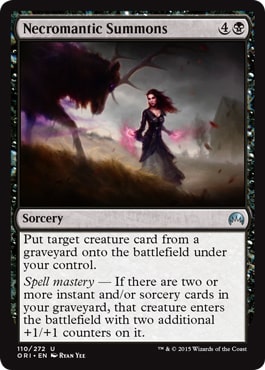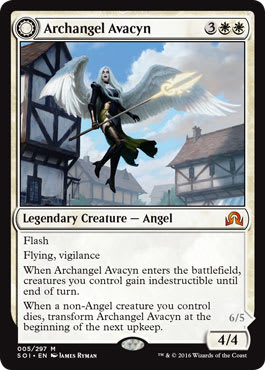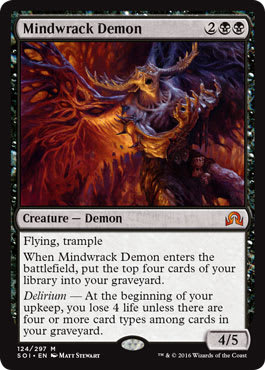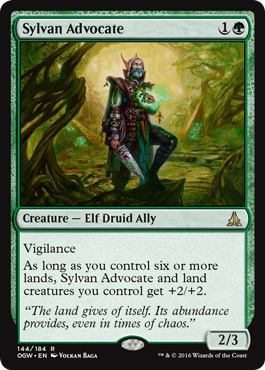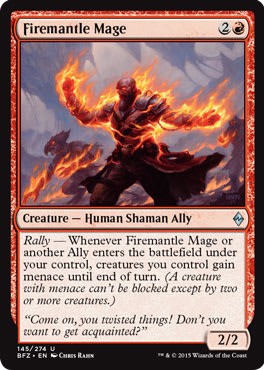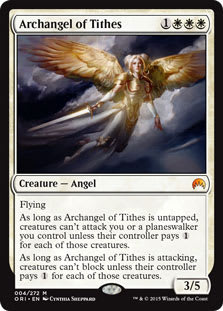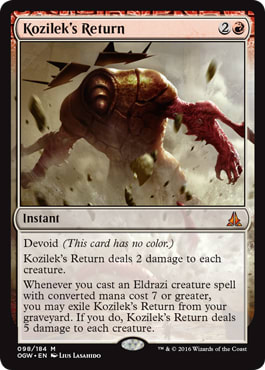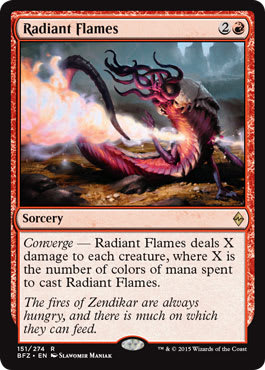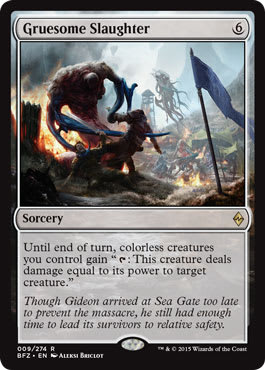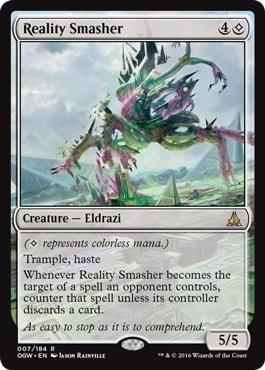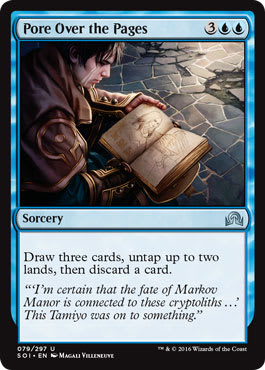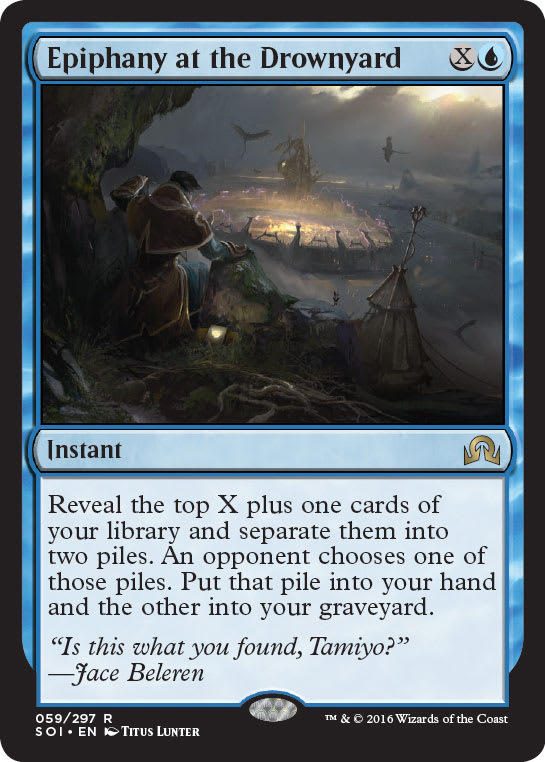Two hours there. Two hours back.
Two hours there. Two hours back.
This has been the story of my life for the last couple of weeks trying to prepare for the Star City Games Circuit event in Baltimore during the inaugural weekend for Shadows over Innistrad Standard. Playtesting has proven to be incredibly crucial in properly evaluating all of the cards that are legal and how they interact with one another on a macro level. This week, I’m going to dump a large chunk of what I’ve learned and only have so much time, so let’s dive it!
Jace, Vryn's Prodigy Isn’t as Scary as You Think
The blue decks are definitely still going to play the babiest Jace, but many people voiced their concerns over how balanced a format with Jace and madness could be. Without fetch lands and decks losing a good bit of efficiency (due to having worse mana), Jace transforms significantly slower and takes a bit of work to turn into a Planeswalker.
This means players have more time to answer Jace while he’s a measly 0/2 instead of being locked in to killing Jace the turn after he hits the battlefield. The synergies with madness cards are definitely there, but building a Lightning Bolt via Fiery Temper is hardly impressive. Jace’s fragility coupled with the time it takes him to turn into a reasonable threat makes it something that may be a pillar of the format, but hardly the oppressive force that doomsayers have been advertising.
Vampires Suck
Seriously, they aren’t worth it. Our group has tried four different variations of Vampires, other players have done videos playtesting with the deck, and all signs point to the tribal archetype not holding up in competitive play. There are a lot of synergies, and the cards look excellent next to one another, but in playing, they just aren’t that powerful.
There are some cool cards in the archetype, but the deck operates on an axis that many archetypes are able to capitalize against. Control decks are perfectly satisfied with a creature-based aggro deck that lacks reach later in the game. Low-to-the-ground aggressive decks (Atarka Red, Humans, etc.) are happy to play against an aggro deck that doesn’t block well. Midrange decks are prepared to one-for-one the Vampires deck out of the game, and the bloodsuckers just aren’t prepared to go big enough to trump midrange decks.
This isn’t to say that all of the cards in Vampires are bad (Olivia, Mobilized for War and Incorrigible Youths come to mind), but it had a very poor overall win percentage (something in the 25% range) in our gauntlet spreadsheet.
If Vampires are your jam and you really want to play with them in a competitive environment, you need to have a good reason.
Planeswalkers Are the Format’s Main Source of Card Advantage
What do Gideon, Ally of Zendikar, Nissa, Sage Animist, Jace, Unraveler of Secrets, Ob Nixilis Reignited, Nissa, Voice of Zendikar, Chandra, Flamecaller, Sorin, Grim Nemesis, and Arlinn Kord have in common? Every single one of them has an ability that produces a card advantage through tokens or raw cards that doesn’t actually cost loyalty. This means they will net their controllers cards every single turn until they are dealt with. This is an enormous upgrade from Garruk Wildspeaker and Jace Beleren costing loyalty to gain anything tangible.
Anything that plans to go past turn five or six needs to have a plan to deal with Planeswalkers and the endless stream of resources they produce—even if that means using one’s own Planeswalkers to match said endless stream. Just dealing with the Planeswalker itself isn’t always enough. Killing a Nissa, Voice of Zendikar after she’s only made a Plant token may be fine, but what about killing a Chandra, Flamecaller after her controller used her 0 ability to gain a fresh grip of cards?
Life-Gain Is Much Rarer than It Used to Be
Magic players have been spoiled with near-endless sources of life-gain for years now. Sphinx's Revelation, Soulfire Grand Master, Gray Merchant of Asphodel, Thragtusk, and even Elixir of Immortality have all been tournament players for a long time now. This era of Magic is over—for now.
Very few decks have reliable ways to gain life. Anguished Unmaking’s drawback is a much larger cost than our playgroup had initially anticipated. Aggressive decks look much weaker than they have in some time, but they are still putting up very reasonable numbers due to their only needing to deal 20 points of damage in a game. When Sorin, Solemn Visitor was legal, there were games in which an Atarka Red player would have to deal 45 points of damage to close a game out.
As a regular Zurgo Bellstriker-into-Dragon Fodder player, I rest easy knowing I only need my fingers and toes to count my opponent’s life total.
When in Doubt, Just Play Ramp
There are a handful of decks that are able to successfully race the Ramp strategies of the format, but Ramp is quite good at going over the top of anything that isn’t good at racing.
R/G Ramp ? Shadows Over Innistrad Standard | Emma Handy
- Creatures (17)
- 4 Hangarback Walker
- 1 Dragonlord Atarka
- 4 Sylvan Advocate
- 4 World Breaker
- 1 Deathcap Cultivator
- 1 Kozilek, the Great Distortion
- 2 Ulamog, the Ceaseless Hunger
- Planeswalkers (4)
- 4 Chandra, Flamecaller
- Spells (17)
- 2 Game Trail
- 3 Kozilek's Return
- 4 Explosive Vegetation
- 4 Nissa's Pilgrimage
- 4 Hedron Archive
- Lands (22)
- 2 Mountain
- 8 Forest
- 1 Blighted Woodland
- 3 Sanctum of Ugin
- 4 Cinder Glade
- 4 Shrine of the Forsaken Gods
This is a rougher list, but it gets to the point very, very quickly. The deck does feel a bit stale at times, but there’s something liberating about just shrugging and dropping an Ulamog, the Ceaseless Hunger on the table. Without Crackling Doom and Utter End around anymore, this deck gained a lot of momentum. Dragonlord Atarka specifically is significantly more powerful than it was last format and gives this deck a slightly different angle of attack.
Negate is Amazing
Seriously, do yourself a favor and just trust me on this one. Negate will probably see main-decked play and will play a much bigger role than Dispel in the earlier stages of this format. Having answers to Planeswalkers that don’t eat your entire turn is a necessity in the upcoming format. Humans and Bant Company are the biggest concern on the list of decks that might not cast a noncreature spell, but that’s a relatively small opportunity cost going into a format that’s so wide open.
People have become used to the more narrow (albeit more efficient) Dispel in the past due to its efficiency and power against Dig Through Time, Rally the Ancestors, and so forth, and unlearning that will be instrumental in Shadows over Innistrad Standard. The applications that Negate has against Explosive Vegetation, Necromantic Summons, and Chandra, Flamecaller alone is enough reason to have the card be prevalent in blue sideboards. How many decks have exceptional targets for Negate just pushes the card over the edge.
Archangel Avacyn Is Better than You Think She Is
This statement probably needs a bit of clarification. Avacyn is a great card, and most people think she is a great card. This is meant to highlight just how many games are dictated by Serra Angel–on–steroids and give a bit of insight into just how bonkers she really is.
In my first article on spoilers, I’d had a bit of trouble figuring out what archetypes could really abuse Avacyn, as I was under the assumption that it took work to make her more than a 4/4. Think of her as something akin to Restoration Angel. Often, the caster of the Angel doesn’t even need something to Flicker. Just having a 3/4 with flash and flying is a great rate for 4 mana. Similarly, a 4/4 with flash, flying, and vigilance for 5 that gains indestructible the turn it enters the battlefield is an amazing deal. If she does anything else on top of that, it’s all extra value.
Avacyn is probably going to be the most important card in the format and will warp the game around her. It won’t be wise attacking into white decks with 5 available mana, but simultaneously, it won’t be wise to never be able to attack.
Avacyn’s interaction with Eldrazi Scions (a way to transform her the way she enters the battlefield) is also a huge boon and creates an incredibly threatening clock worth almost half one’s starting life total. Consider this scenario: You are playing an Abzan deck that includes Catacomb Sifter and Archangel Avacyn. You are at 6 life, your opponent is at 9, and both of you are in top-deck mode. During your previous turn, your opponent used the player’s last card in hand—a Fiery Impulse—to kill your Catacomb Sifter, leaving both of you with no cards in hand and no creatures onboard outside of your Eldrazi Scion. You draw an Archangel Avacyn for turn and pass. Your opponent draws a Chandra, Flamecaller and attacks you with two 3/1s. You flash in Archangel Avacyn and block both. Taking no damage and losing no creatures, you sacrifice the Eldrazi Scion for a mana during the end step. This triggers Avacyn, and she transforms during your next upkeep (dealing your opponent 3 damage in the process). This allows you to attack with Avacyn, the Purifier for the last 6 points of damage and take your opponent from a greatly favored position to dead with a single mythic rare.
Gideon, Ally of Zendikar Becomes Significantly Weaker
Previous to playtesting very much Shadows over Innistrad Standard, I would repeat the same thing to people over and over whenever asked what I wanted to play past rotation.
“Oh, I’m not really sure—probably just casting Reflector Mage into Gideon, so Gideon has a clean board on top of a reasonable blocker to get out of control.”
After running the gauntlet, I’ve learned just how many things that Gideon dies to or doesn’t interact favorably with:
He seriously just kind of dies to everything. This doesn’t even cover everything that 2/2 Knight Allies really just don’t play well in the face of:
If I had been told all of this before playtesting, I would have shrugged it off. “Sure, threats die to answers. Everything is trumped by something. Even Ulamog, the Ceaseless Hunger gets wrecked by Stasis Snare.” But seriously, do yourself a favor, and just take my word on this one. Gideon is poorly positioned going into this format despite being a powerful Magic card.
Having a Way to Break Board Stalls Is Crucial
Many creature decks that gum up the ground have been springing up in playtesting, and they’re having half-hour-long staring contests with one another because nobody can profitably attack. When building any Collected Company deck, non-flying tribal (Elves, Humans, Zombies, etc.) deck, or tokens deck, it is imperative to include something that is able to go over the top or provide evasion to your creatures.
This can take many different forms. The first thought is to just play a handful of flying creatures (Archangel Avacyn, anyone?) to gain incidental bits of value in the form of damage that eventually force the opponent to react. Another solution in the same vein is to use something that grants a form of pseudo-evasion, such as Firemantle Mage or Archangel of Tithes. These cards are reasonable because they impact the board while also making life tougher for the opponent.
The next step is just having a card that makes your creatures unprofitable for your opponent to block. The best examples of this kind of effect are the various forms of Glorious Anthem–style effects that will be legal and the indestructibility that Avacyn grants (are you starting to see a recurring theme with her?).
The third option is to have something that actually impacts your opponent’s side of the board in a devastating way. This is a bit trickier, as Wizards isn’t prone to making cheap Plague Wind cards (though Crux of Fate did exist . . . ), but there are things that can be done in deck-building to make damage-based sweepers like Kozilek's Return and Radiant Flames more one-sided. Gruesome Slaughter also may end up deserving a second look if games tend to drag out for endless amounts of time.
Eldrazi Aren’t Getting Love Because People Are Tired of Them, Not Because They Aren’t Good
The prevalence of “Eldrazi Winter” in Modern has made people incredibly bored with Thought-Knot Seer and company, but they’re all just as good as they used to be. In fact, the Eldrazi shell is probably contextually better than it used to be. Competing with mono-colored cards in terms of raw power is much easier than competing with piles of three-colored cards backed up by the descendants of Ancestral Recall, Bloodbraid Elf, and Living Death.
The biggest concern people have voiced in my area is how poorly Reality Smasher interacts with madness cards from the opponent. This seems to be a bit of an overstatement, as it is unlikely that the turn after Thought-Knot Seer (on curve) the opponent will still have a removal spell, a madness spell, and something else worth doing on top of that. Eldrazi are very powerful, and it is important to not forget about them.
Blue Lacks Good Card-Draw
This is a large problem for many of the control decks that my group has been playing. Blue mages have been spoiled during the last few years with Dig Through Time, Sphinx's Revelation, Jace, Architect of Thought, Treasure Cruise, and even Jace, the Mind Sculptor. In Shadows over Innistrad Standard, there is only Pore Over the Pages, Epiphany at the Drownyard, Dragonlord's Prerogative, Jace, Unraveler of Secrets, and a handful of Divination variants.
Other colors do have card-draw, but it is generally at a cost of life or other resources. Read the Bones, Ob Nixilis Reignited, Chandra, Flamecaller, and Painful Truths are all quite powerful, but they aren’t just the flat-out card advantage that players have become accustomed to.
When building decks, it is important to understand the fundamentals of how cards are going to flow and whether jamming a million answers in a deck is actually going to prove fruitful.
Declaration in Stone Is the Bee’s Knees
When Declaration in Stone was first spoiled, the public opinion erred toward something to the effect of saying, “This is only playable in aggressive strategies that can win the game before the opponent has a chance to crack the Clues.” This has proven to be very wrong in playtesting, and it draws more parallels than one may think.
Thought-Knot Seer instantly dying to a removal spell is rarely that big of an issue for the Eldrazi’s controller, as that player still was able to take the best card out of the opponent’s hand in a sort of “reverse-loot” effect. Declaration in Stone is in the same vein in that whatever creature or creatures it is removing probably cost more mana than the Declaration itself, and then costs the creature’s controller to spend even more mana (read: time) to gain the card or cards back. This doesn’t even take into consideration the times when the caster of Declaration in Stone is able to remove an entire Secure the Wastes’s worth of creature tokens for significant value.
With so many things to take note of that just came from the eight people in my testing group, it’s exciting to think of all of the technology that will show up this weekend as people converge in Baltimore to play in the first major tournament with Shadows over Innistrad being legal. I’ll have my notepad with me and will be writing different observations tirelessly in an attempt to learn as much as possible from the single event. If you have any observations you’ve made and want to join in to the conversation about Shadows over Innistrad Standard, make sure to leave a comment below!















